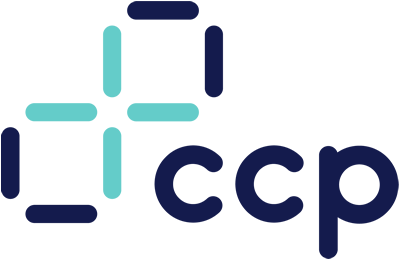
Does committing to a traditional fixed-model outsourced contact centre arrangement feel like a risky undertaking these days? Are some outsourcers at risk by sticking with a ‘vanilla’ static service contract, rather than moving with the times? Let's find out.
Steve Sullivan, Head of Regulatory Compliance
Some people love contracts, others see them as a “document of last resort”.
In the world of customer management / customer experience outsourcing, most people responsible for contracts, both clients and outsource service providers, will aim to be familiar with the service schedules of their contract, but through absorbing the key requirements and mechanisms into their day-to-day working lives. And they will rarely need to reference the original agreement.
Though that isn’t necessarily the way things work. 20 years ago, I had a client who would fly over from Paris once a month with an entire contract printed out, filling a lever arch file crammed into her work bag!
The vast majority of outsourcing contracts follow the same, familiar pattern; three years’ initial term, with the easy potential to extend for a further two. From a buyer’s perspective this offers the reassurance of five years’ clarity about who is going to provide vital customer management services, how and – subject to the vagaries of any cost of living allowance (COLA) measures in the contract to address inflation – confidence over the costs of those services. Equally, this contractual clarity and reassurance allows outsource service providers to better plan, invest and manage their business.
When contracts fail
Historically, this model of contracting tends to fall over when one of two things happen:
- The parties fall out and that commercially vital relationship collapses (and that’s why clients need to be very circumspect about the outsourced service provider they select in the first place!); AND/OR
- Changes in the nature of customer demand and behaviour challenge or undermine assumptions in the contract. Especially when transformational metrics and goals have been embedded into a contract, or when service providers are offering a total cost of ownership (TCO) bundled pricing model, a shift in consumer behaviour and their interactions – the volume of contacts, when they are made, using what channels – may serve to potentially undermine the operational and commercial basis of the contract.
Without naming names, those of us in the contact centre and CX industry can think of major outsourced service providers which bet big on their ability to reduce customer contact through things like enhanced self-service tools, but failed due to other, external factors. These drove up unanticipated demand – and the providers ended up with lengthy, loss-making contracts on their hands.
With the best will in the world relationships can always sour and founder, of course. However, we are all capable of learning from experience (at times!) and both seasoned clients and service providers have a broad understanding that there are caveats and limits to what providers can commit to in the face of what Harold Macmillan reputedly referred to as “events, dear boy, events”.
In which case the ‘3 + 2’ model of a well-crafted contract, featuring service schedules that balance a grasp of what’s feasible and achievable with meeting clients’ customer experience ambitions, seems fit for purpose. Doesn’t it? Maybe not.
So, what’s wrong with the old 3 + 2 model?
Here’s what’s wrong – for years the biggest risk and disruption factor for contact centre operations came from unmanageable and unanticipated demand. But now the greatest unpredictability comes from supply; how brands, outsourced service providers and their contact centres go about meeting that demand.
The increasing pace of change is a cliché, but it’s also true.
5 or even 3 years ago who could have accurately foreseen the rise of accessible, highly accurate translation engines that have made the need for multilingual staff in non-voice setting largely redundant in many operations? Today, AI-driven, synthetic voice tools that can deliver quality natural language conversations aren’t yet ready to be operationalised, but by 2026 they may well be. Until recently, accessible technologies that could accurately classify and summarise contacts without any human intervention, or the ability to reliably (and increasingly accurately) present advisors with the sort of guidance and information they need to help with precisely the sort of contact they are handling sounded like the stuff of contact centre managers’ fever dreams. No longer.
It’s hard to tell what the next few years will bring us in terms of time saving and resolution-enhancing technologies, but one thing that’s certain is that committing to a traditional fixed-model outsourced contact centre arrangement now feels like a risky undertaking.
So, what’s the solution?
Should clients do nothing and either:
- Not outsource key functions when their internal and market analysis says that that’s what’s needed; OR
- Let outmoded contractual terms roll over, fearful of committing to changes that can’t be undone and will expose them to worse problems down the line?
And if you’re an outsourced services provider faced with a wall of business-draining indecision from current and potential clients, what should you do?
3 points for your consideration
Clients:
- If you have, or are about to appoint, an outsourced services provider then you’re setting out to build and test a crucial relationship. Ideally, you’re doing so with a provider which will share with you the learnings from them having undertaken similar journeys with a variety of different clients before. If your partner dependably delivers an operational service with an honest and customer-focused approach, then they may well be the right partner for the next stage; exploiting the potential of AI & ML-based technologies (whether the initiative is taken by you as a client, or the provider comes to you with their chosen technologies).
- We all know it’s hard, but outputs – measures of positive customer experience, total cost of ownership, benchmarked service standards – are the most robust metrics to base your provider’s contractual quality of delivery on. Outsourced service providers increasingly understand that ‘more of the same’ contracts won’t meet the market’s needs.
- And if your current standards of customer service and delivery are really poor, either through an existing, failing outsourced provider or an in-house solution you can’t fix, then it’s better to settle for a new solution and a commercial arrangement that’s less than fully optimised and future-proofed, but does ensure better experience for you and your customers.
Service Providers:
- You may have had years of experience in innovating operationally and technically. Now’s the time to think more – or think afresh – about being commercially innovative. You have incredible insight through talking to clients – and their customers – day in and day out.
- Do you need to re-orientate your business model so that you are better able to cope with the potential impacts and risks of clients being with you for shorter, or less predictable period? Or can your application of technology to your and your clients’ mutual benefit help ensure longer relationships, even with less contractual commitment?
- For some service providers, more radical change may be required. If you need to identify and nurture genuine transformational partnerships, in place of ‘vanilla’ static service contracts with clients, then that will require a change in proposition, go to market strategy and your selection of potential clients.
What do you think?
What are your thoughts on the future of the ‘3 + 2’ contracting model? Do you think we’re thinking along the right lines, or have we underestimated the enduring value of proven, traditional approach? Whether you’re a client or service provider we’d love to hear what you think.
And if you’re facing challenges designing the right sort of commercial arrangement for outsourcing – either as a client or service provider/BPO – we’re here to help.






